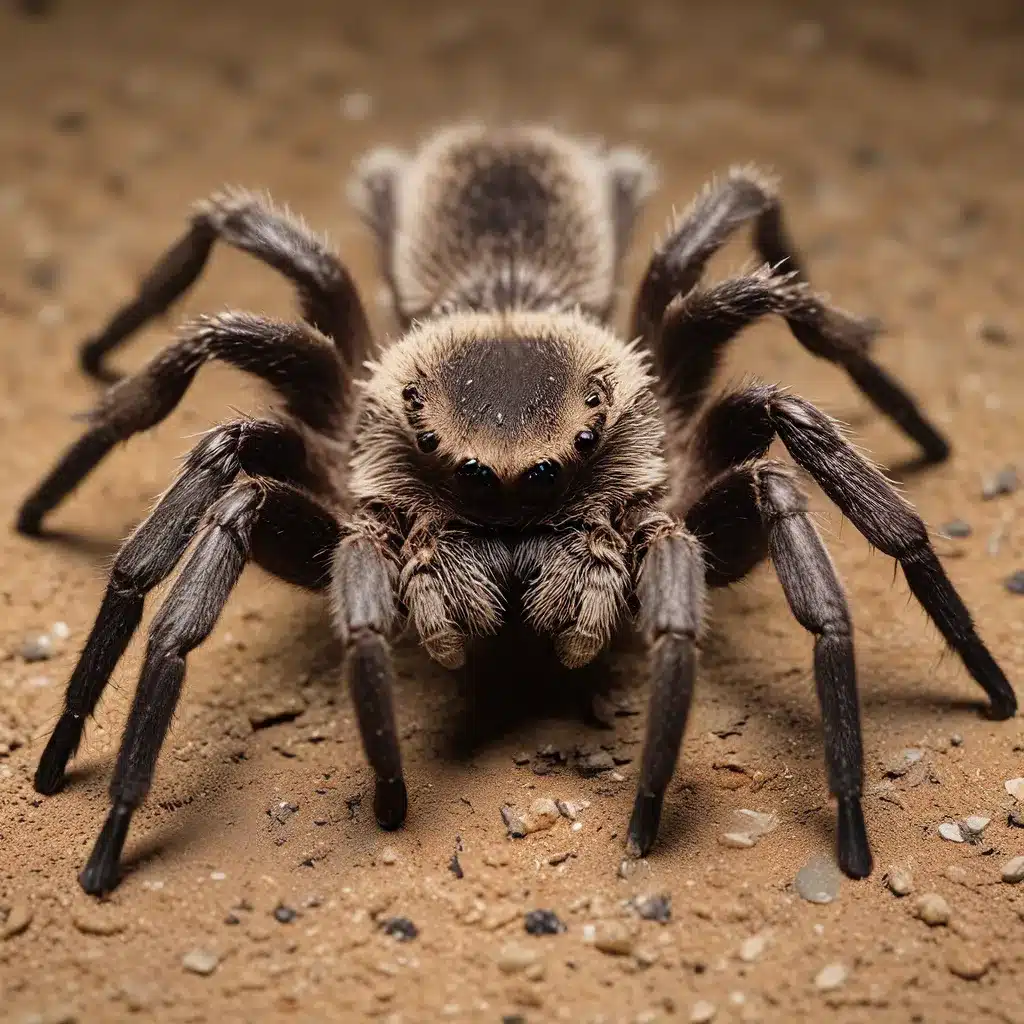
Unraveling the Mysteries of Arachnid Allure
Alright, let’s dive right in! Shall we explore the captivating realm of tarantulas together? These eight-legged wonders have long captured the curiosity and imagination of nature enthusiasts worldwide. From their striking appearances to their intriguing behaviors, tarantulas are truly a sight to behold.
So, what is it about these arachnids that makes them so fascinating? Well, my friends, let me tell you – these critters are a veritable treasure trove of surprises! Did you know, for instance, that some tarantula species can live for up to 20 years in captivity? That’s longer than many household pets! Talk about a commitment, am I right?
But the real kicker? These remarkable creatures have the ability to regenerate lost limbs. Can you imagine? If a tarantula happens to lose a leg, it can actually grow it back over time. Talk about a superpower! It’s no wonder they’re often associated with good luck in certain parts of the world.
Unraveling the Tarantula Taxonomy
Now, let’s dive a little deeper into the world of tarantulas, shall we? These captivating arachnids belong to a family called Theraphosidae, which includes over 900 species found in various parts of the globe. From the vibrant Costa Rican Zebra Tarantula to the enigmatic Goliath Birdeater, the diversity within this group is truly astounding.
The Costa Rican Zebra Tarantula, for instance, is a marvel of nature. With its striking black and white striped pattern and impressive size (females can reach up to 5 inches in leg span!), it’s no wonder these critters have captivated the hearts and minds of so many. And let’s not forget the Goliath Birdeater, which can grow to be the size of a dinner plate. I mean, talk about a spider that’s big enough to take on a small avian prey – hence the name!
But you know what really gets me excited? The adaptability of these arachnids. Did you know that the Costa Rican Zebra Tarantula can thrive in a range of habitats, from lush rainforests to arid scrublands? That’s like a superpower in its own right! It just goes to show you how resilient and remarkable these creatures truly are.
Tarantula Trivia: Uncovering the Unexpected
Alright, now that we’ve covered the basics, let’s dive into some truly fascinating tarantula trivia, shall we? Get ready to have your mind blown!
For starters, did you know that these spiders are nocturnal hunters? That’s right, they prowl the night, using their keen senses to track down their prey. And what do they like to feast on, you ask? Well, it’s not just insects – these guys have been known to take down small lizards, rodents, and even other tarantulas. Talk about a ruthless predator!
But here’s the real kicker: tarantulas have a unique defense mechanism up their sleeve. You see, they can actually release specialized hairs from their abdomens when they feel threatened. And these hairs? They’re designed to cause discomfort and deter potential predators. Talk about a built-in security system!
And let’s not forget about the mating rituals of these arachnids. It’s a real sight to behold! Male tarantulas will embark on long journeys in search of potential mates, and once they’ve found a suitable partner, they’ll engage in an elaborate courtship dance. It’s like something straight out of a nature documentary, I tell you!
Tarantulas: Captivating Creatures in Conservation
Now, as fascinating as these arachnids may be, we can’t ignore the very real challenges they face when it comes to conservation. You see, habitat destruction is a significant threat to the survival of species like the Costa Rican Zebra Tarantula. As agricultural activities and urban development encroach on their natural habitats, these spiders are being displaced and their delicate ecosystems disrupted.
But it’s not just habitat loss that’s a concern – the pet trade also poses a significant threat. You see, these unique spiders are sometimes collected and sold as exotic pets, leading to population declines in the wild. And that’s where conservation efforts come into play.
Initiatives like the establishment of national parks and protected areas are crucial in providing safe havens for these amazing arachnids. And educational programs that raise awareness about the importance of conserving tarantulas and their habitats are also making a real difference.
So, what can you do to help? Well, my friends, one of the best ways is to support organizations that are dedicated to tarantula conservation. And if you’re feeling adventurous, why not consider volunteering with a group like GVI in Costa Rica? There, you’ll have the chance to get up close and personal with these fascinating creatures while contributing to vital conservation efforts.
Embracing the Arachnid Allure
At the end of the day, tarantulas are truly remarkable creatures. From their longevity and regenerative abilities to their captivating behaviors and vital roles in their ecosystems, these arachnids are a testament to the wonders of the natural world.
So, the next time you encounter a tarantula, don’t be quick to run the other way. Instead, take a moment to appreciate the sheer beauty and complexity of these amazing animals. Who knows, you might just find yourself falling under the spell of their arachnid allure, just like I have.
Happy exploring, my friends!

